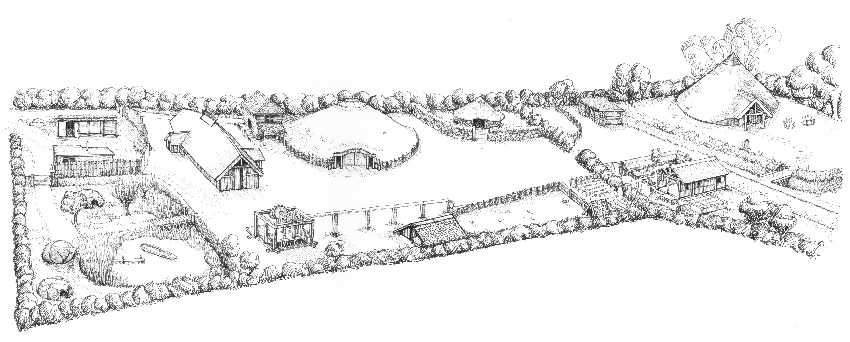




















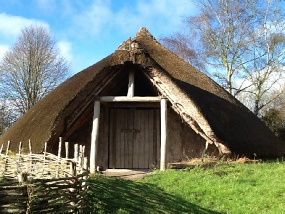
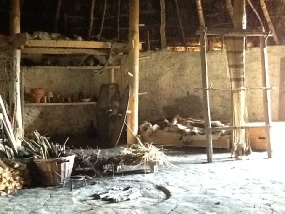
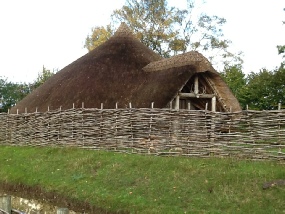
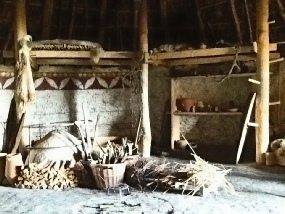
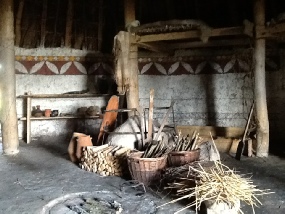
The archaeological evidence for this building comes from an excavation in North Wales called Moel y Gaer. This building represents a “typical” Iron Age dwelling dated to around 200 AD. The evidence for any structure like this is at best limited to post hole and stake hole evidence, burned hearth remains, collapsed oven remains and perhaps a scatter of pottery shards. The reconstruction of these buildings relies heavily on common sense and knowledge of timber.
Our original roundhouse was built by Jake Keen and school children 26 years ago and has been visited by many thousands of visitors during its life. The roundhouse is a firm favourite with visitors and children alike and has performed well as an ancient building.
The hazel and ash frame had become unstable and rotten due to extensive woodworm infestation and the decision was taken to dismantle the structure before it fell down! Some of the water reed thatch was salvaged and used for other smaller structures on site, while the dried clay and cow dung daub was also be recycled and used again.
The reconstruction started in October 2010 based on the same archaeological evidence. The roof was thatched in spring 2012 and the external wall finished spring 2013. We are keeping the structure and the external appearance identical to the old building, but years of teaching and living experiments within the roundhouse have highlighted several changes we would like to make inside. The new roundhouse has a milk and earth floor, slightly higher walls and will have continuous high level sleeping platform around the walls to free up floor space for living.